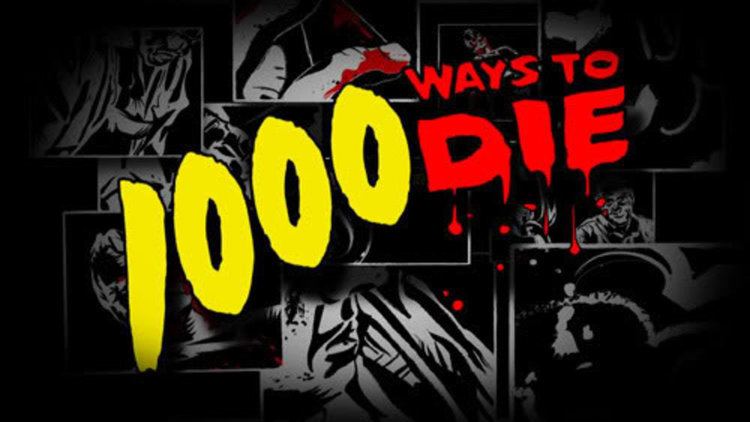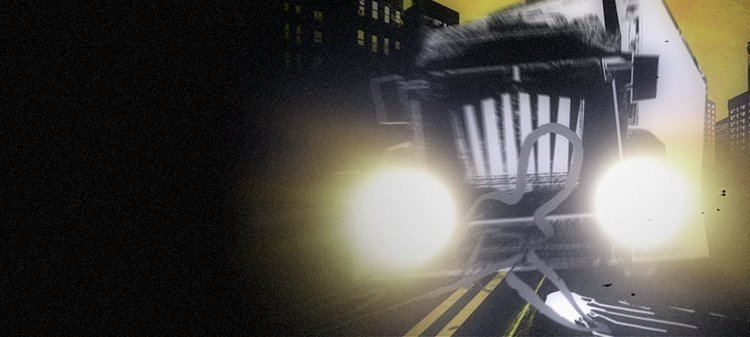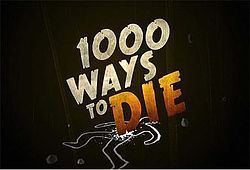7.6 /10 1 Votes
8.1/10 TV Original language(s) English Final episode date 15 July 2012 Number of seasons 4 | 7.1/10 IMDb Country of origin United States First episode date 14 May 2008 Number of episodes 74 | |||||||||||||||||||||||||||||||||
 | ||||||||||||||||||||||||||||||||||
Written by Tom McMahonH.A. ArnarsonGeoff Miller Directed by Will Raee (Pilot), Tom McMahon Narrated by Thom Beers (pilot, U.S. broadcast)Ron Perlman (seasons 1-4 U.S. broadcast)Joe Irwin (season 4, U.S. broadcast)Alisdair Simpson (pilot & series 1-4 UK broadcast) Theme song 1000 Ways to Die Theme song Similar Manswers, 1000 Ways to Lie, Unsolved Mysteries, Black Gold, Coal | ||||||||||||||||||||||||||||||||||
1000 Ways to Die is an anthology television series that premiered on Spike on May 14, 2008, and ended on July 15, 2012. The program recreates unusual supposed deaths and debunked urban legends and includes interviews with experts who describe the science behind each death. Up until the end of season one, the final story of each episode showed actual footage of dangerous situations that almost ended in death, along with interviews with people involved in the situations. A portion of these deaths have been nominated for or have received a Darwin Award. Ron Perlman served as the narrator on every episode since the third episode (with Thom Beers narrating the first two episodes); beginning with the episode "Tweets from the Dead" Joe Irwin was featured as the replacement narrator.
Contents

Spike burned off the final four episodes, ending the series with the airing of "Death, The Final Frontier". The show was cancelled after the producers and stars of the show ran a strike against the network. Reruns can be found on Comedy Central most Sunday mornings.

1000 ways to die pit y party
Stylization
1000 Ways to Die takes a tongue-in-cheek dark humor with approach to death through its presentation of stories derived from both myths and science, and the show makes liberal use of artistic license to significantly embellish or change the circumstances of real-life incidents that resulted in death for greater entertainment value. Not only are the names changed, but substantial amounts of the locations, dates and context. One notable exception is the accurate description of the death of Harry Houdini.
A frequently recurring motif is that of unsympathetic individuals' choices backfiring on them, resulting in death.
Some of the deaths resemble real life events they are based on, for example death #197 – "Dead Eye" was based on the real life death of Jon Desborough.
Some take enormous poetic license with the truth. For example, death #692 – "Gone Fission", a story of two hapless Yemeni terrorists in 2009, implausibly attempting to build an atomic bomb, may have been based on the real Demon Core accident involving US scientist Harry Daghlian in 1945.
Some of the stories include elements of truth, for example #396 – "onesie & Donesie," where an accident-prone TV shopping network host is injured by a collapsing ladder, stabbed by the tip of a broken katana, then finally burned to death when a onesie he is wearing catches fire. The ladder collapse happened to Harold McCoo on the Cable Value Network in 1988, although he was unhurt. The katana incident happened to Shawn Leflar on The Knife Collector's Show on the Shop at Home Network in 2001. However, the third part of the story is made up.
The show is filled with black humor (particularly in the narration) which tempers the otherwise somber theme of death. It portrays the deaths using live-action recreations of the events along with expert and sometimes witness testimony, also using graphic computer-generated imagery animations, similar to those used in the popular TV show CSI, to illustrate the ways people have died. A narration provides background information within each death-story, which all end with titles that are puns on popular figures of speech.
Content rating
1000 Ways To Die is rated TV-14 for graphic, bloody violence. In addition to the V (violence) sub-letter, the show is also rated TV-14 for moderate sexual content (scenes of sexual intercourse), and language. The show also has episodes rated TV-MA.
